Prosperi Studio and the Artist’s Vision
Many conversions with Warren and Lucia Prosperi have made me fascinated with the way artists affect our perceptions and emotions. As a neurologist, I’m curious about how the brain processes visual art. Artists teach us to see the world differently, of course. What’s less well known is that their techniques can also show us how we see, how the brain makes images of the world. Scientists have begun to study artists to learn what artists instinctively know about how we extract form and meaning from the jumble of information our eyes take in.
When skilled artists look at a painting, they do so differently from people with untrained perception. Even the eye movements of artists are different. Artists’ eyes fixate on figures for longer periods of time than amateurs do, but less often. Instead, artists look more widely at the background, in part to see how the picture is built. Most people, when looking at a painting like Warren Prosperi’s Museum Epiphany II, have eye movements like those shown below in the lefthand figure.
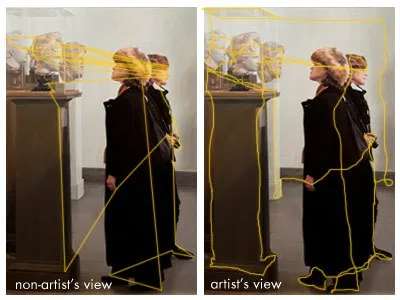
They look rapidly back and forth between the living faces, with a few forays to the marble heads that mirror them and a glance at the feet and plinth. An artist viewing the painting may spend relatively more time on the gradation of light across the white wall, or the relationship between the parallel columns of the womens’ bodies and the two pedestals.
Artists work to keep the viewer’s eyes from glancing off the surface of things, to help the viewer look longer and deeper, as artists do. One of Prosperi’s characteristic techniques to slow down the viewer’s eyes is the way he plays with basic aspects of vision, such as figure-ground transitions. All human brains are wired so that we see a shape as either figure or ground, but never both simultaneously. In the famous Rubin face-vase illusion, all of us see alternately the white vase or the two dark profiles that outline it, but we must pause to make sense of the image. Artists are more aware that in any picture the background is a shape too.
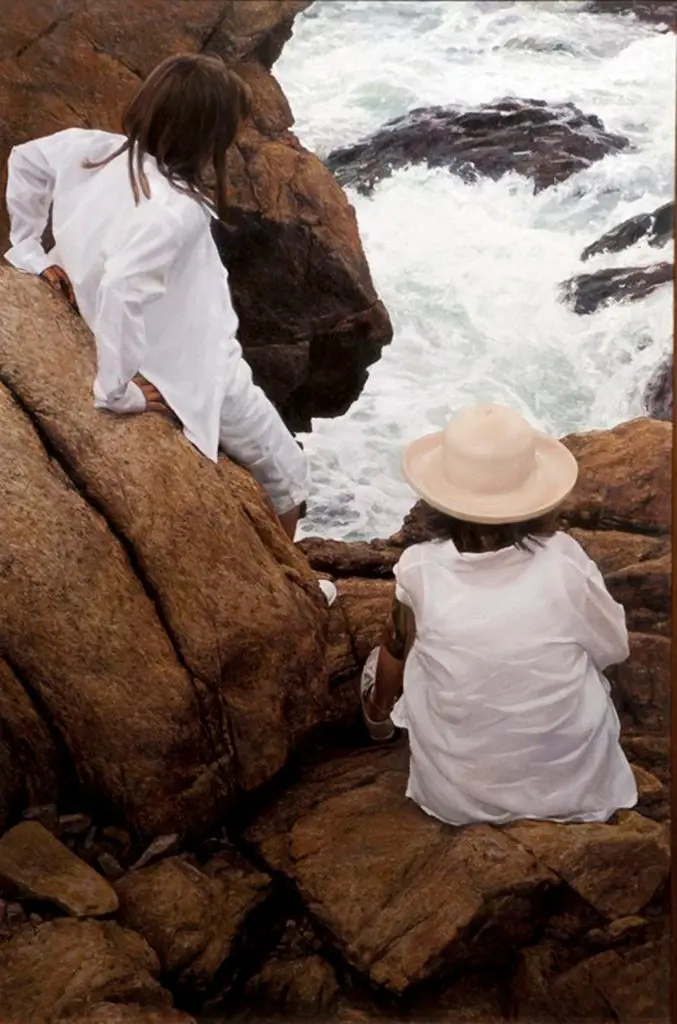
Conversation by the Sea, shows a delicate ambiguity in figure-ground relations. It is more easily seen when looking at the painting upside down, so that the subject matter doesn’t distract us from the design transitions. Viewed this way, it is more evident that the sea foam’s brightness pulls it forward visually, even though it is in the background of the scene. The reversed luminance presses the seascape into the foreground and creates visual tension.
Figure-ground ambiguity in painting work the way subtle puns do in poetry: they show us similarities we didn’t expect. Because contour is the major cue that the brain uses to identify forms, the children’s pale clothes make their bodies hard to distinguish from the white breakers. The children could be bits of sea foam thrown higher on the rocks. When Prosperi twists and breaks up a scene’s contours, he helps us see beyond conventional categories, such as “cute kids” and “surf”, to something new
…
Alice Flaherty
(Alice Weaver Flaherty, author of “The Midnight Disease: The Drive to Write, Writer’s Block, and the Creative Brain,” views the paintings through a neurologist’s eyes. She calls Warren Prosperi’s style “optical naturalism” and says that by carefully removing or withholding certain details, he creates scenes that look “even more real than a photograph.”)
More Naturalism Journals

A Conversation by the Sea
Children clambering on sea-washed boulders, a fly-fisherman midcast and midstream, quartets of musicians in rapt rehearsal-each rendered vividly, tenderly, realistically, in a call to the here and now, to the gesture that constitutes lived experience. The contemporary realist paintings in Duets-Theme and Variation, Warren Prosperi’s selection of paired images at Vose Galleries (May 16-June 25, 2011), […]
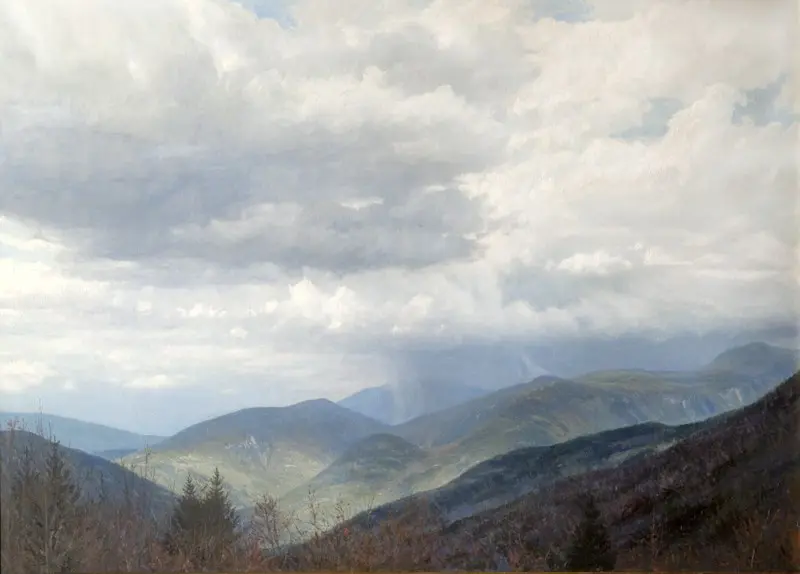
Duets: Theme and Variations New Paintings by Warren Prosperi
If it hadn’t been for a stroke of good luck, Vose Galleries would still be continuing its ten-year countrywide search to find a world-class figure painter. As it happened, our artist in residence, Peter Greaves, was at our framer’s studio and noticed an incredible portrait by a painter totally unknown to us named Warren Prosperi. […]

Boston Globe: “Accuracy is in the details”
Prosperi painting depicts pivotal moment in the Battle of Bunker HillJuly 01, 2011|By Cate McQuaid, Globe Correspondent SOUTHBOROUGH — Through the early morning hours of June 17, 1775, American colonists dug a trench and built a wall on Breed’s Hill. As dawn broke, the British below saw the activity and lobbed cannonballs at the culprits — […]

Artists Show Us How We See
By Alice Flaherty, MD, PHD (original article appeared in Vose Galleries Catalog for “Duets, Theme and Variation”) Many conversions with Warren and Lucia Prosperi have made me fascinated with the way artists affect our perceptions and emotions. As a neurologist, I’m curious about how the brain processes visual art. Artists teach us to see the world […]
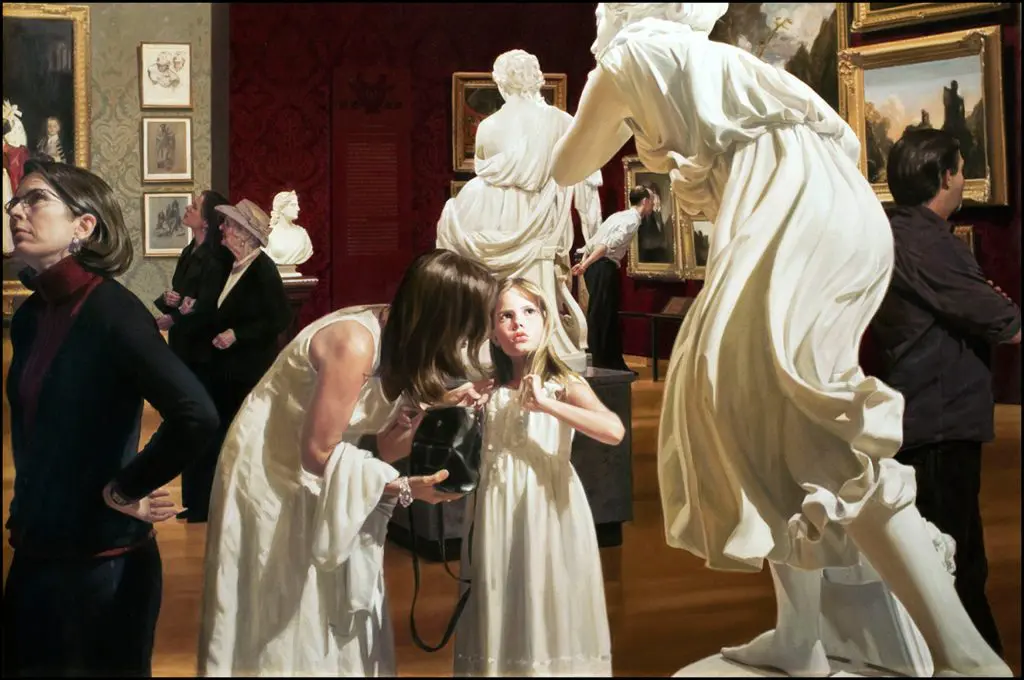
The MFA Plays An Artful Mind Game With Its Visitors — And They Love The ‘Epiphany’
Prosperi’s Museum Epiphany III is featured in the Penny and Jeff Vinik Gallery on the second floor of the Art of the Americas wing of Boston’s Museum of Fine Arts. The gallery has red Victorian wallpaper and white classical statues. Museum Epiphany III is the central painting on the gallery’s southeast wall and shows an expression of the real-time view of the gallery you are in.
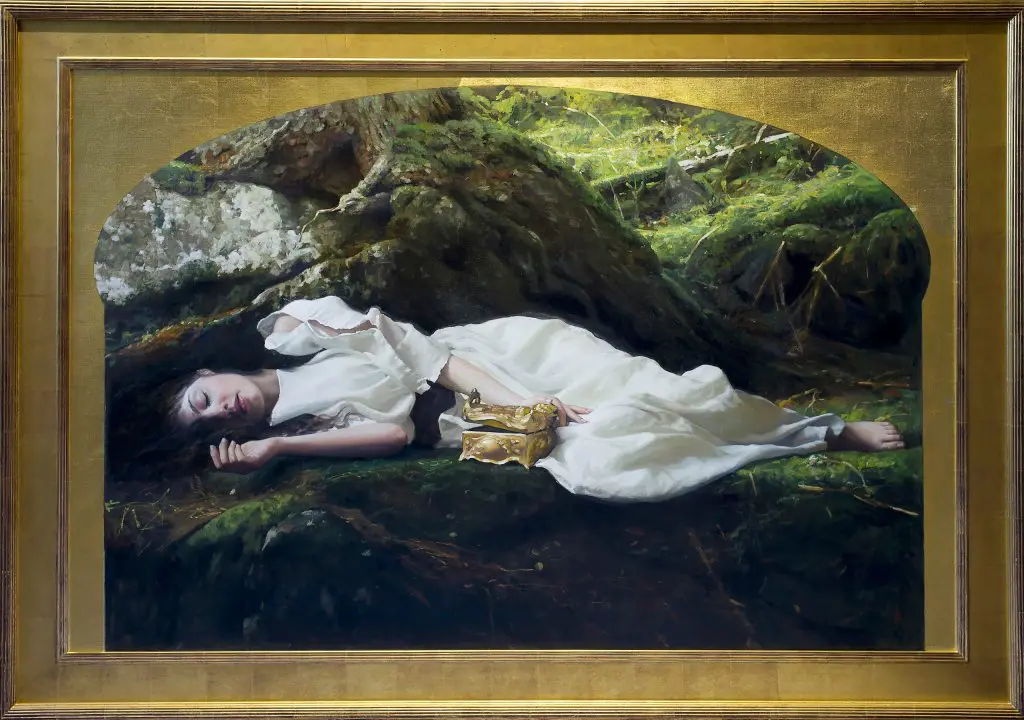
Toward a New Definition of Symbolist
Trying to make a clear definition of the Symbolist Movement is a frustrating endeavor. In terms of expressive intent, artists like Gustave Klimt, Ferdinand Knnopff, Arnold Broecklin, can seem very far away from the English Pre-Raphaelite painters like John Waterhouse, Lord Leighton, and Arnold Hacker. How does some one like John E. Millais, arguably a […]